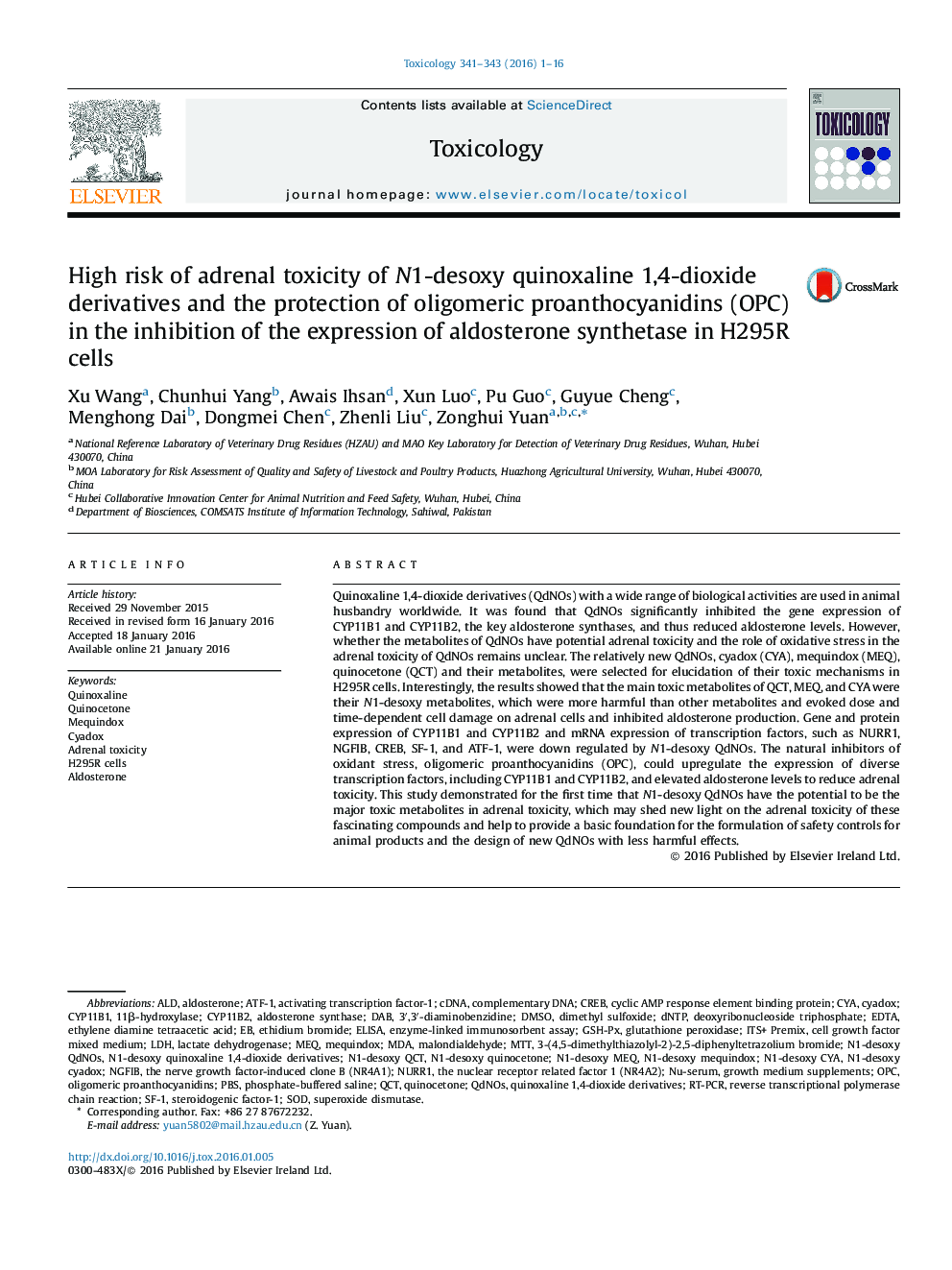| کد مقاله | کد نشریه | سال انتشار | مقاله انگلیسی | نسخه تمام متن |
|---|---|---|---|---|
| 2595470 | 1562315 | 2016 | 16 صفحه PDF | دانلود رایگان |

• N1-QCT, N1-MEQ and N1-CYA showed more adrenal toxicity than other metabolites.
• N1-desoxy QdNOs reduced expression of CYP11B1, CYP11B2 and transcription factors.
• OPC increased expression of transcription factors, including CYP11B1 and CYP11B2.
• OPC reduced adrenal toxicity induced by N1-desoxy QdNOs.
• The results provided a mechanism of adrenal damage caused by QdNO metabolites.
Quinoxaline 1,4-dioxide derivatives (QdNOs) with a wide range of biological activities are used in animal husbandry worldwide. It was found that QdNOs significantly inhibited the gene expression of CYP11B1 and CYP11B2, the key aldosterone synthases, and thus reduced aldosterone levels. However, whether the metabolites of QdNOs have potential adrenal toxicity and the role of oxidative stress in the adrenal toxicity of QdNOs remains unclear. The relatively new QdNOs, cyadox (CYA), mequindox (MEQ), quinocetone (QCT) and their metabolites, were selected for elucidation of their toxic mechanisms in H295R cells. Interestingly, the results showed that the main toxic metabolites of QCT, MEQ, and CYA were their N1-desoxy metabolites, which were more harmful than other metabolites and evoked dose and time-dependent cell damage on adrenal cells and inhibited aldosterone production. Gene and protein expression of CYP11B1 and CYP11B2 and mRNA expression of transcription factors, such as NURR1, NGFIB, CREB, SF-1, and ATF-1, were down regulated by N1-desoxy QdNOs. The natural inhibitors of oxidant stress, oligomeric proanthocyanidins (OPC), could upregulate the expression of diverse transcription factors, including CYP11B1 and CYP11B2, and elevated aldosterone levels to reduce adrenal toxicity. This study demonstrated for the first time that N1-desoxy QdNOs have the potential to be the major toxic metabolites in adrenal toxicity, which may shed new light on the adrenal toxicity of these fascinating compounds and help to provide a basic foundation for the formulation of safety controls for animal products and the design of new QdNOs with less harmful effects.
Figure optionsDownload as PowerPoint slide
Journal: Toxicology - Volumes 341–343, 3 February 2016, Pages 1–16